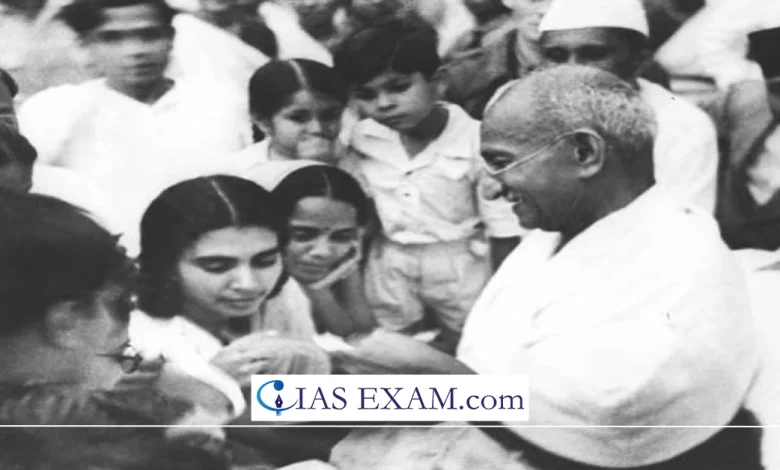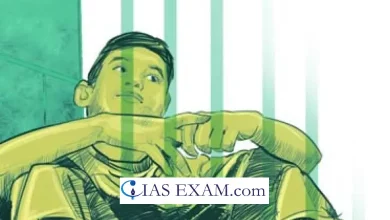
Context
Vaikom, a temple town in the princely state of Travancore, witnessed the start of a non-violent agitation on March 30, 1924.
About the Vaikom Satyagraha
- Background:
-
-
- The princely state of Travancore had a feudal, militaristic, and ruthless system of custom-ridden government; a number of the most inflexible, delicate and ruthless social norms and customs were seen in Travancore.
- Lower castes like the Ezhavas and Pulayas have been considered polluting and various guidelines were in place to distance them from higher castes.
- These protected a prohibition, not just on temple entry, however even on taking walks by the roads surrounding temples.
-
- Contribution of Leaders:
-
-
- In 1923, Madhavan presented the issue as a decision at the Kakinada meet of the All India Congress Committee. Subsequently, it was taken up by the Congress Untouchability Committee formed by the Kerala Pradesh Congress Committee in January 1924.
- Madhavan, K.P. Kesava Menon who was the then secretary of Kerala Pradesh Congress Committee and Congress leader and educationist K. Kelappan (additionally referred to as Kerala Gandhi) are considered the pioneers of the Vaikom Satyagraha movement.
-
- Factors Leading to Satyagraha:
-
- Christian missionaries, supported by the East India Company, had extended their attainment and many lower castes converted to Christianity to get away from the clutches of an oppressive system that persevered to bind them.
- Maharaja Ayilyam Thirunal, took many modern reforms.
- Most essential of those was the creation of a modern education system with free education for all – even lower castes.
- Forces of capitalism and these reforms created new social hierarchies – which had been not always congruent with traditional ones.
Road to the Vaikom Satyagraha
- The issue of temple entry was first raised by Ezhava chief T K Madhavan in 1917.
- Inspired by the success of Gandhi’s Non-Cooperation Movement (by 1920) he began to propose more direct methods.
- But top-caste counter-agitations across Travancore made any development tough and the Maharaja (terrified of caste Hindu backlash) shied far from reforms.
- It was the access of the Indian National Congress (INC) into the image that modified the dynamics.
- Madhavan met Gandhi in 1921 and secured the Mahatma’s help for a mass agitation to go into temples.
- In the 1923 session of the INC in Kakinada, a resolution was handed by the Kerala Provincial Congress Committee to take in anti-untouchability as a key issue.
- This was accompanied by a big public messaging marketing campaign and a movement to open Hindu temples and all public roads to avarnas.
- Vaikom, with its revered Shiva temple, was chosen as the place for the first actual satyagraha.
Start of the Vaikom Satyagraha (March 30, 1924)
- Madhavan and other leaders took the strategic decision to begin with focusing on opening up the four roads around the temple (not the temple itself) to avarnas.
- Leaders including Periyar and C Rajagopalachari came to Vaikom to provide guidance and lead the protesters.
- At the same time, counter-agitations raged on, and the satyagrahis regularly faced violence and intimidation from caste Hindus.
- In March 1925, Gandhi was eventually able to iron out a compromise: 3 out of the 4 roads surrounding the temples had been opened up for all people, however the fourth (eastern) avenue was reserved for Brahmins.
- The satyagraha ended by November 1925, while the government completed diversionary roads that would be used by the low castes “without polluting the temple”.
Legacy and Aftermath of the Vaikom Satyagraha
- The Vaikom satyagraha forced social reform amidst the growing nationalist movement, bringing Gandhian strategies of protest to the state of Travancore.
- It was a remarkable movement, which sustained itself amidst opposed social forces, police crackdowns, and one of the worst floods in the town’s history in 1924.
- The satyagraha additionally noticed formerly unseen harmony throughout caste lines, which was critical for its continuing mobilisation.
- But the final compromise disappointed many. For example, Periyar disagreed with Gandhi over the issue.
- In 1936, the Maharaja of Travancore signed the historical Temple Entry Proclamation which removed the age-vintage ban at the access of marginalised castes into the temples of the state.
- This, along with the demonstration of Gandhian techniques of civil disobedience as effective tools of protest, was the great success of the Vaikom satyagraha.
- According to the Maharaja of Travancore, despite its shortcomings the Vaikom satyagraha brought untouchability, unapproachability and unseeability to the forefront of political issues in India.
Source: The Indian Express
UPSC Mains Practice Question
Q.Temple movements in India are no longer caste based rather they have shifted their focus to gender based. Examine. (250 words)





.png)



